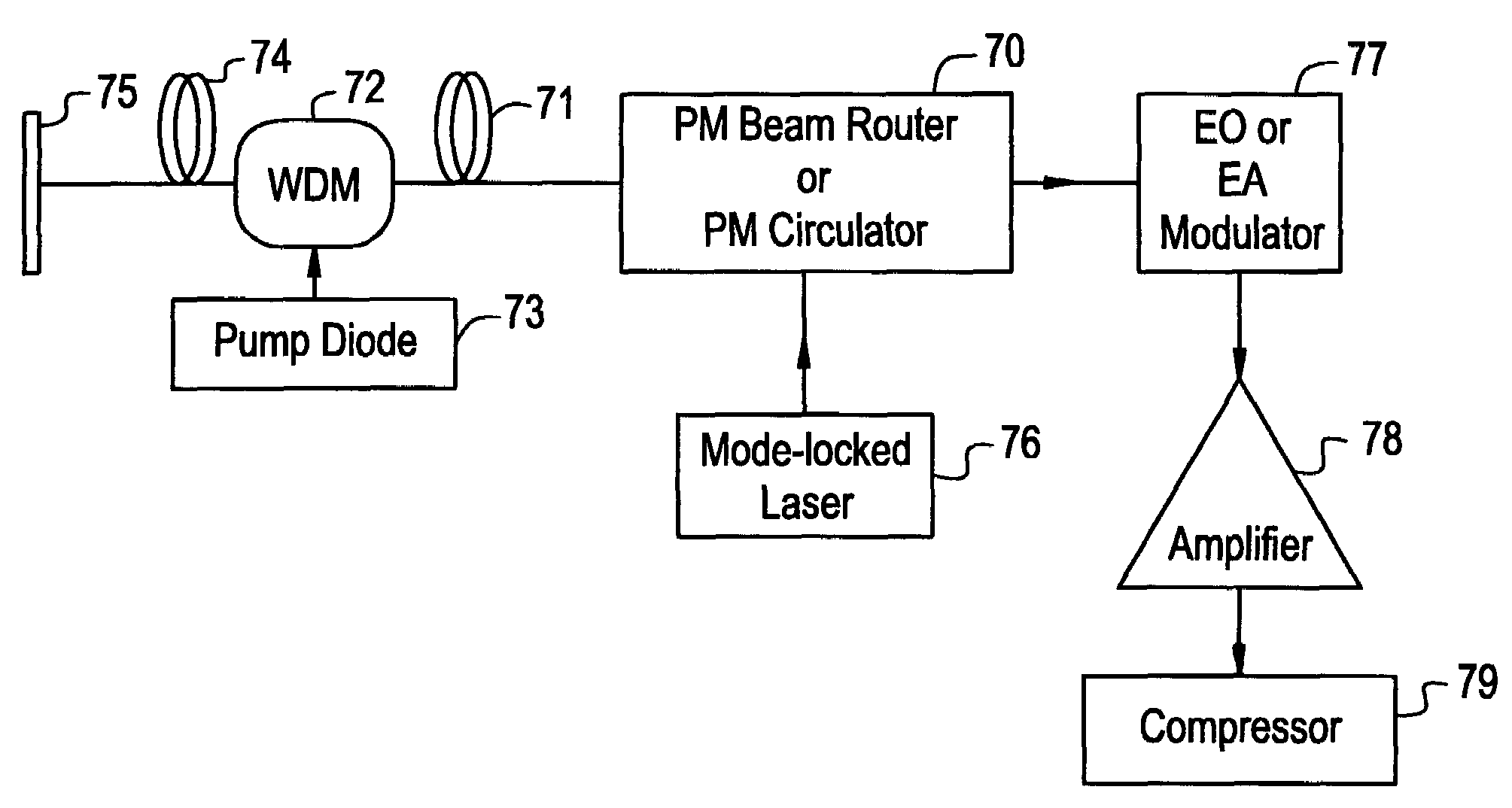High power fiber chirped pulse amplification system utilizing telecom-type components
a technology of telecom-type components and high-power fibers, applied in the direction of electromagnetic repeaters, active medium materials, electromagnetic transmission, etc., can solve the problems of little research occurring recently, inconvenient use, and inability to meet the requirements of acousto-optic modulators working at 1550 nanometers, and achieves superior mechanical stability.
- Summary
- Abstract
- Description
- Claims
- Application Information
AI Technical Summary
Benefits of technology
Problems solved by technology
Method used
Image
Examples
Embodiment Construction
[0032]A detailed description of the preferred embodiments of the invention will now be given referring to the accompanying drawings.
[0033]For chirped pulse amplification systems operating at wavelengths of approximately 1550 nanometers, acousto-optic modulators with fast rise times have limited availability, due to lack of appropriate materials. However, the telecommunications electro-optic modulators and electro-absorption modulators provide an alternative solution. Such modulators, however, have not been used in a chirped pulse amplification system for the purpose of pulse selection. Referring to FIG. 1, a chirped pulse amplification system is illustrated. A mode-locked laser 10 outputs a pulse stream 11, which is input into a modulator 12. The modulator 12 then modulates the incoming pulse stream 11, and outputs the selected pulses 13. The modulator 12 can be a LiNbO3 electro-optic modulator or an electro-absorption modulator.
[0034]In the present invention, a LiNbO3 modulator is ...
PUM
 Login to View More
Login to View More Abstract
Description
Claims
Application Information
 Login to View More
Login to View More - R&D
- Intellectual Property
- Life Sciences
- Materials
- Tech Scout
- Unparalleled Data Quality
- Higher Quality Content
- 60% Fewer Hallucinations
Browse by: Latest US Patents, China's latest patents, Technical Efficacy Thesaurus, Application Domain, Technology Topic, Popular Technical Reports.
© 2025 PatSnap. All rights reserved.Legal|Privacy policy|Modern Slavery Act Transparency Statement|Sitemap|About US| Contact US: help@patsnap.com



